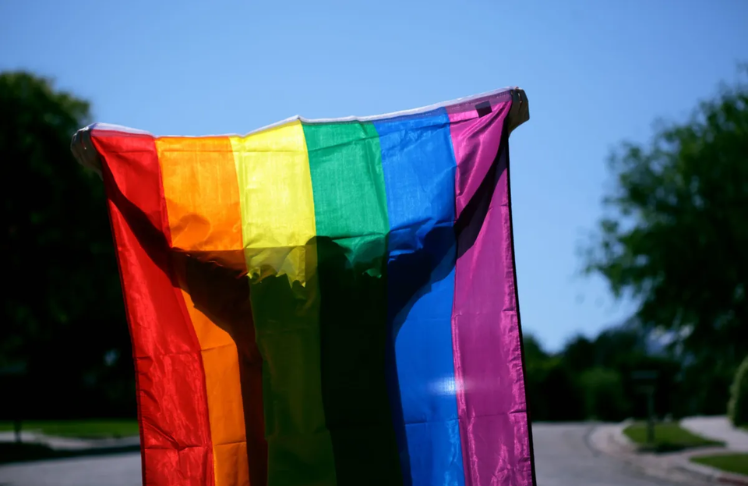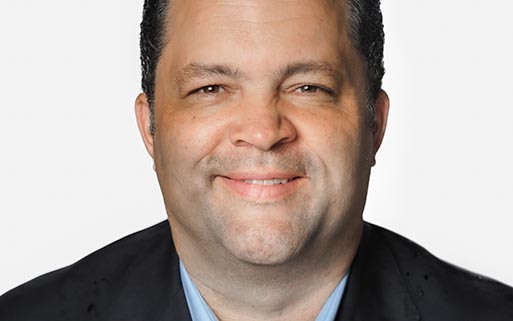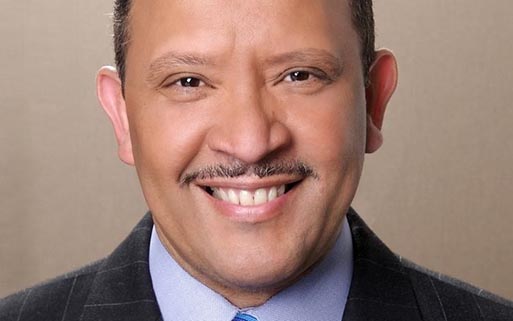
by Maya Pottiger
As students around the country begin heading back to school, they’re being told that this year will be “normal” again, referring to classes being in-person and likely mask-less.
But it won’t be normal for LGBTQ students. In fact, it will likely be one of the furthest from normal school years they’ve had. So far this year, there have been more than 300 bills introduced that target LGBTQ people, and more than half of those aim to restrict all aspects of transgender kids’ lives, from the bathrooms they use to the sports they play.
Specifically, 10 of these anti-LGBTQ bills target schools. A Florida law aims to ban discussions of gender and sexuality in classrooms. In Indiana, South Dakota, and Tennessee, there are now restrictions on sports teams that trans kids can play in. Alabama enacted similar legislation, but with the extension of preventing trans kids from using bathrooms and lockers that match their gender.
“Teachers are so nervous that if they see something, that they have to say something about it,” says Victoria Kirby York, the deputy executive director of the National Black Justice Coalition. But the laws vary state to state, she says, even though coverage tends to treat them all the same. “So you see teachers going past their duty and censoring conversations about anything related to LGBTQ people.”
“There’s definitely a need to make sure that educators really understand what they’re required to do and what goes beyond those requirements,” York says.
The Intersection of Being Black and LGBTQ
For those who live at the intersection of being Black and LGBTQ, it’s a particularly difficult time. As society and schools are trying to limit LGBTQ identities and how you can talk about them, the same is happening when it comes to the country’s history of racial injustice and white supremacy.
Geoffrey Winder, the co-executive director of Genders & Sexualities Alliance (GSA) Network, says this strategy feels like “an overall attack on all aspects of your identity,” along with an attempt to erase or deny your ability to talk about them as part of “what’s acceptable in public discourse.”
“There’s this moment that particularly Black LGBTQ students are experiencing, which is their identity is up for public ideological debate,” Winder says.
As we head into the midterm elections, we will “definitely witness further attacks and misinformation about LGBTQ+ children and educators,” GLSEN Executive Director Melanie Willingham-Jaggers wrote in a statement to Word In Black.
“Curriculum censorship bills only further harass Black queer students, who are already some of our most persecuted and disenfranchised youth,” Willingham-Jaggers wrote. “We must rise up for LGBTQ+ youth and keep advocating for inclusive education that promotes a safe and healthy environment for all of us.”
While support systems have been trying to help Black LGBTQ build an identity based around pride and a positive sense of their history, all of those things are coming under attack. That’s going to sit with this generation of students.
“Ultimately, it’s telling folks that they’re not welcome here,” Winder says, and “they’re being set up through the education system to experience that failure in a real moment or a real sense.”
Voters Are Against These Bills
Voter surveys show why it’s especially important to cast a ballot this year. Two separate polls show the majority of voters in Florida and Texas — the states leading anti-LGBTQ legislation — oppose these new restrictions.
In GLAAD’s August 2022 poll of Florida LGBTQ and ally voters, more than 70% of respondents said that laws like the Don’t Say Gay/Trans bill are designed to attack LGBTQ people, and 70% “strongly agree” the bills will be emotionally damaging to LGBTQ children and parents.
And a separate poll by The Trevor Project shows that most Florida voters are “generally opposed” to banning or limiting LGBTQ content in public schools. The largest margin was in response to the question of banning LGBTQ books in school libraries, with 52% totally opposing it and 32% totally supporting it.
Both polls found that voters in Texas and Florida generally believe transgender youth should have access to gender-affirming care, and that parents and pediatricians should not be charged with child abuse for providing this care.
For many Black LGBTQ youths, schools can provide a much-needed space of affirmation, a place where they can live as their full, authentic selves, Preston Mitchum, director of advocacy and government affairs at The Trevor Project, wrote in a statement to Word In Black.
“As anti-LGBTQ lawmakers continue to attack schools’ ability to foster LGBTQ-inclusive spaces, these critical and potentially life-saving environments are in jeopardy,” Mitchum wrote. “Our elected officials should be expanding opportunities and support services for LGBTQ students — and Black LGBTQ youth in particular — not sidelining a group of young people who already face disproportionate risk for suicide.”
‘We Are Going to See Kids Feeling Less Safe at School’
For many students — especially Black students — school is a building that houses so much more than education, like access to free meals, and physical and mental health resources. But for students that live at the intersection of Black and queer, these new legislation are going to start stripping away that sense of security.
“We are going to see kids feeling like they’re less safe at school, and less safe to be themselves at school,” York says.
In its 2022 National Survey on LGBTQ Youth Mental Health, The Trevor Project found that LGBTQ youth who found school to be affirming reported lower rates of suicide attempts.
Both LGBTQ and trans and nonbinary youth found school to be a more affirming place in 2022 compared to 2021, according to survey results. In 2022, 55% of LGBTQ youth identified school as an affirming place, along with 51% of trans and nonbinary youth.
“Given our findings,” Mitchum wrote, “providing a safe and welcoming space at school can be critical for their well-being. Conversely, if schools are forced to eliminate this type of affirming environment — something that can serve as a strong protective factor against suicide for these young people — due to anti-LGBTQ policies enacted in their state, that is definitely cause for concern.”
Though it’s not universal, educators in schools with predominantly white students were “significantly more likely” than educators in schools with predominantly students of color to report “intrusion of political issues and opinions” as job-related stressors, according to a new RAND study. Educators in predominantly white schools shared with RAND researchers how parents and school board members “expressed concern” with some of the content teachers chose, specifically when it came to books featuring people of color or LGBTQ people.
When it comes to confidence in navigating conversations about race, racism, and bias in their classrooms, a RAND study found that 47% of teachers reported having “sufficient” access to guidance and resources, compared to 14% who said they had “completely sufficient” access and 33% who said they had “somewhat sufficient” access.
“It’s important for educators to show support for LGBTQ+ students, and create a school environment where kids feel safe and comfortable sharing their identity,” Willingham-Jaggers wrote. “When students see their teachers as being supportive, it can significantly improve their academic performance, psychological well being, and long-term educational goals.”
York grew up in Florida, which not only has the Don’t Say Gay bill, but also a bill that attempts to regulate and restrict how schools talk about race. Her nephews still live and attend school in the state, and York worries about them dealing with fear around their race and wanting to ask questions to get a better understanding of the “real history.”
“It’s a double whammy of them feeling like my family isn’t valued, it doesn’t matter,” York says, adding that self-confidence and self-image are important developments in preteen and teenage years. “We have to learn from it or risk repeating the things that we’re so embarrassed to talk about.”
Mental health is also Winder’s top concern for Black LGBTQ students returning to school. He describes a “double attack” of conversations around critical race theory and anti-LGBTQ legislation — on top of the pandemic — that will have an overall toll on students.
The Trevor Project survey found that 60% of LGBTQ youth who wanted mental health care in the past year were not able to get it, which included nearly 3 in 5 transgender and nonbinary youth (58%). The top concerns among those who wanted care but didn’t get it were fear of discussing mental health concerns (48%), obtaining parent/caregiver permission (45%), and fear of not being taken seriously (43%).
Kids who are realizing they identify as transgender or nonbinary might have particular questions or concerns about using the bathroom or need to confide in a guidance counselor, and now they might be too scared to seek out that report in the school building.
“They shouldn’t have to question whether or not they can trust teachers,” York says. “And, more importantly, our teachers and administrators shouldn’t have to question whether they can intervene. That’s really terrifying.”
Health and History Lessons Are Changing
As these laws crack down on what students can be taught in school, the most obvious curriculum changes will come to health classes. Health education was already incomplete — with some states only teaching abstinence — and now, especially with the overturning of Roe v. Wade, it will take an even bigger hit. The states that are doubling down on conversations around gender, race, and sexuality are setting youths up for failure and misinformation.
“There’s going to be a lot more confusion and lack of information when it comes to LGBTQ sexual health,” York says, “which is particularly concerning because of the data we have around HIV/AIDS and how it’s continuing to have a disproportionate impact on Black youth.”
The 2022 legislative session saw record numbers anti-LGBTQ bills introduced in states across the country, a handful of which are aimed at censoring conversations in schools.
“Regardless of whether these bills passed in state legislatures, the sheer number of debates surrounding them may cause confusion and put pressure on health educators to omit LGBTQ-inclusive content from their lesson plans,” Mitchum wrote, “denying LGBTQ students from receiving information that is critical to their health and well-being.”
But it’s not just health class where Black LGBTQ students will see themselves erased. They may no longer learn about historic LGBTQ figures, like Bayard Rustin, who helped organize the March on Washington, or Barbara Jordan, who was the first Black woman elected to the Texas Senate and the first Black Texan in Congress.
“You miss out on these opportunities to learn about courageous figures who could inspire a child’s career and life decisions,” York says. “These are all parts of a comprehensive education, and the impact makes students — and teachers, for that matter — who are part of the community feel as if their histories, voices, experiences, and realities don’t matter.”
Rainbows Are Coming Down
Across the country, Genders & Sexualities Alliances, or GSAs, allow LGBTQ students to build community through student-run groups. Though they are student-run, the groups need to have an advisor, usually an adult in the school. States where anti-LGBTQ bills have passed, like Florida, are already seeing an impact on GSAs.
“School districts that used to be on a very supportive, inclusive track have been asking folks to take down rainbows, rainbow stickers, safe space stickers — anything that has to do with the GSA in public visibility,” Winder says.
One route schools are taking is keeping their GSAs as online groups, the way they existed during the pandemic. And, in response, students — like those in Wellsboro, Pennsylvania — are using the Equal Access Act to demand that they can continue on with their club like any other extracurricular.
It’s important for students to be able to meet in person. Not only does it validate the GSA in the same way marching band or physics olympics are allowed to exist, but it makes it more accessible. As we saw during the peak of virtual learning, there are inequities when it comes to online learning and virtual experiences, which disproportionately impact students of color.
“In a very real sense, it’s returned to a limited ability to, as a school district, show your support for LGBT students,” Winder says, “and for LGBT students feeling like the rules are changing around you about what you can say or how you could act.”
The Broader Impact
Of course, these impacts will be felt beyond Black LGBTQ students, and even beyond the LGBTQ community as a whole. For one, GSA advisors are already being targeted, Winder says, which causes them and school administrators to hesitate toward continuing these supports for students. And, more relatably, it limits conversations students are having in the cafeteria or how they talk about their friends’ lives.
“The moment your friend shares what they did on their date the night before, the conversation has to get cut off. That has an impact on the dynamics between students,” York says, also extending it to the conversations teachers have in the break room. “That has a dynamic between teachers and conversations they can and can’t have, and then how that shows up and how they are able to work together well or not.”
Even if someone does not identify as part of the LGBTQ community, these new school climates will have drastic impacts on their friends’ identities as they’re erased from curriculum or seen as “other.”
“When people talk about allies, it’s often done in a way that’s distancing, like we’re over here,” York says. “But the reality is we’re family and we’re friends of each other.”















